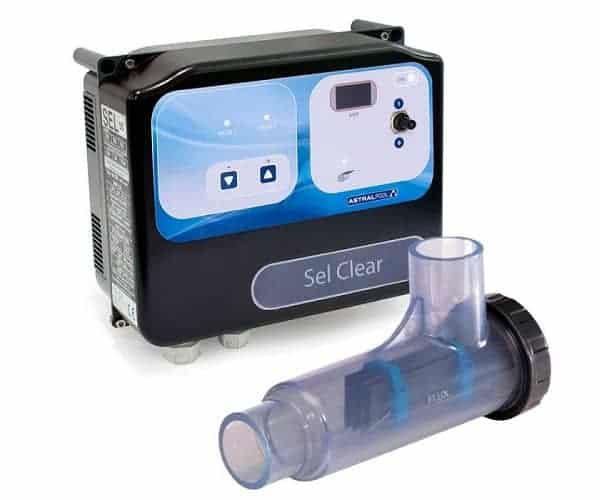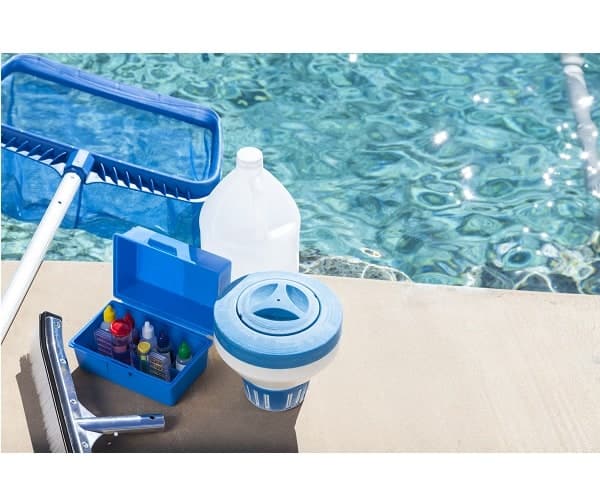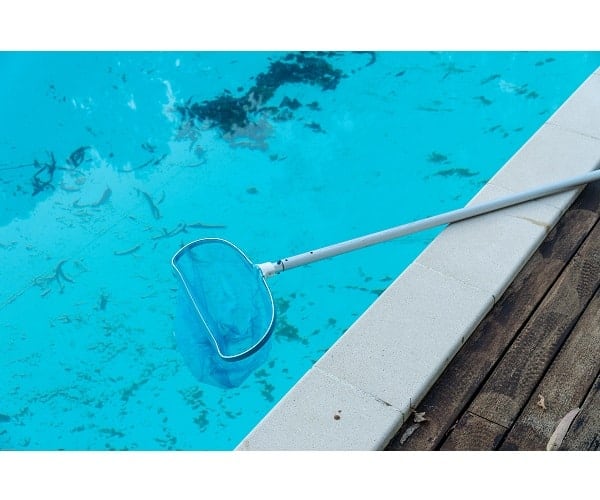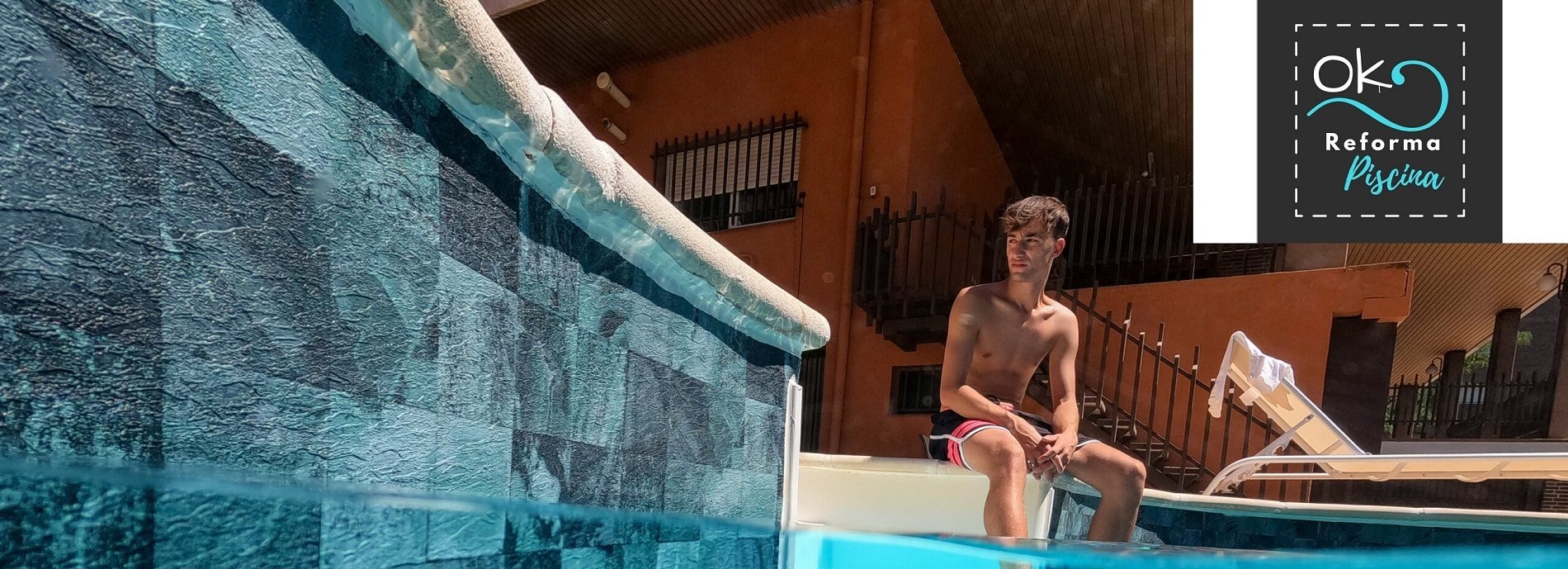
Table of contents of the page
First of all, within Ok Pool Reform and within the section of What is salt chlorination, types of Saline Electrolysis equipment and difference with chlorine treatment We present you an entry about How to install a salt chlorinator in a heated pool
What is salt chlorination
Salt chlorination is a popular alternative to traditional methods of swimming pool disinfection.
Salt chlorination or salt electrolysis is an advanced sterilization and disinfection system to treat swimming pool water with saline disinfectants. (through the use of chlorine or chlorinated compounds). It works by passing a low voltage current through salt water, which produces
How to install a salt chlorinator in a heated pool

Difference between salt electrolysis (salt chlorination) and chlorine treatment

Details to heat the water: Heated Pool
How to install a salt chlorinator if there is any type of heating system
If you have a salt chlorinator and some type of heating system, you may be wondering how to properly install the salt chlorinator.
Luckily, it's not as difficult as it seems, since with a few simple steps, you can easily get your salt chlorinator up and running! Read on for more information.
Turn off power to pool pump at breaker box
It is important to remember to disconnect the pool pump from the breaker box after each swimming session.
- Doing so will prevent overloading the system and ensure it runs smoothly for many years.
- Disconnecting the power will reduce wear on the pump mechanics, as well as energy costs by not running non-stop.
- Turning off the circuit breaker should be part of regular maintenance for all pools and spas for optimal performance.
- This precaution not only saves money, but also provides peace of mind knowing that your pool or spa is well cared for.
Remove the old chlorinator from the pool pipes
Removing the old chlorinator from the pool pipes is a necessary and important task.
- If not done correctly, it can pose a significant safety risk to anyone using the pool.
- It must be done with care and attention to ensure that no part of the chlorine system remains in place.
- Additionally, it is important to double check that all connections are securely disconnected to not allow any corrosive compounds or gases to enter the pool water or air.
- Following these steps will help ensure that this essential maintenance work is done safely for the benefit of your bathing area.
It is very important to install the salt chlorinator before any type of heating system.

Installation of a salt chlorinator when there is a system to heat the pool water
- Installing a salt chlorinator before heating ensures that all water passes through the electrodes, resulting in adequate disinfection
- This will ensure that all pool water passes through the electrodes and is properly disinfected. If the salt chlorination system is installed after a heater has been installed, it may cause damage or malfunction of both systems.
- The salt chlorination process uses an electrolytic cell to convert dissolved salt into chlorine gas. When this gas enters the pool, it kills bacteria and other microorganisms while sanitizing the water.
- Therefore, to maintain a safe and healthy bathing environment, it is imperative that the electrochemical cell releases sufficient chlorine for proper disinfection.
Install the new salt chlorinator in its place
- In addition to being installed before a heating system, salt chlorinators should also be installed away from other pool equipment, such as pumps and heaters, to avoid any potential damage or malfunction of either system.
- Installing your new salt chlorinator in place is an invaluable part of maintaining a healthy pool and prolonging its life.
- This system helps purify pool water, removing potentially harmful bacteria and other impurities.
- Chlorine is slowly released into the pool, ensuring the water remains clean, balanced and free of algae.
- An experienced technician should be chosen to install this system accurately and safely so that swimmers can enjoy a clean and safe pool all season long.
- Doing so will give you peace of mind knowing that your pool is contamination-free and well-maintained.
General method of How to install a salt chlorinator
Install the chlorinator following the manufacturer's instructions
- Installing a chlorinator may seem like a difficult task, but following the manufacturer's instructions makes it a much easier process.
- Be sure to read the manual carefully and go step by step.
- Chlorinators are important devices because they ensure your pool has clean, safe water, so it's worth taking the time to install them correctly.
- You can also find detailed guides on the Internet if you need additional help with any part of the installation.
- With a few simple steps, installing a chlorinator doesn't have to be time-consuming or complicated; You just have to make sure each step is correct.

Installing a salt chlorinator is a simple way to keep your pool clean and healthy.
With a few simple steps, a DIYer can get their pool up and running quickly.
- Firstly, Depending on the m3 of pool water, we will add the necessary amount of pool salt inside the glass and VERY IMPORTANT with the pool pump running. (it is advisable to leave the pool in manual filtration mode during a filter cycle after adding the salt).
- To clarify, the salt must be distributed throughout the periphery of the pool glass evenly so that it can accommodate the entire volume of water; This way we will ensure that it dissolves quickly.
- Afterwards, it doesn't hurt Clean the pool filter.
- The next step is to make two holes that have a distance between 15-20 cm in the water return pipe.
- We place on the wall of the technical room the pH dosing equipment automated.
- We place the pH lowering bottles or pH increaser (as applicable) near the pH regulator equipment and we introduce the PVC pipe inside, having previously made a hole in the cap of the acid drum and fitting the tube and connecting it to the peristaltic or dosing pump.
- Connect the peristaltic pump to the power.
- In order to calibrate the device, insert the probe into the pH7 solution for a few seconds and then press the calibration button.
- We repeat the previous process of calibrating the probe with the pH9 solution.
- Place the probe or electrode in the hole we made at the beginning.
- Next, we place the salt chlorination electrode in the water return pipe.
- And finally, We connect the salt chlorinator and the electrode.
- We now have everything ready for the equipment to be put into operation!
Video How to install a salt chlorinator
Step-by-step guide to installing a salt chlorinator
Treating pool water with salt has multiple advantages that we show you in this step-by-step guide from LEROY MERLIN on pool maintenance.
Discover in this video how to install a salt chlorinator in your pool.
Connect the salt chlorinator to the pool pump
Connecting a salt chlorinator to the pool pump is essential for efficient and effective pool maintenance.
- To ensure that chlorine is distributed evenly throughout the pool, it must be managed properly.
- By connecting a salt chlorinator to the pool pump, this process can be simplified and automated, saving the pool owner time and effort.
- A poorly connected salt chlorinator will not be effective, so it is important to check all connections before using it.
- With proper installation and care, a salt chlorinator can provide a simple solution to keeping your pool in swimmable condition.
Turn on the pool pump and check for leaks
Caring for a pool may seem like a daunting task, but it doesn't have to be. One of the most important necessary maintenance tasks is to turn on the pool pump and check for leaks.
- This process should be done at least once a week, as the pump is essentially what keeps the pool running properly.
- It circulates water and chemicals through the pool so it is clean and safe for bathers.
- Plus, checking for leaks helps prevent expensive water bills from increasing due to gallons wasted on inadvertent holes or breaks in the plumbing system.
- Taking some time each week to turn on the pump and check for leaks will ensure your pool stays beautiful all season long.
Finally, it is important to ensure that the salt chlorinator is properly maintained according to the manufacturer's instructions.

Useful guide to know how to clean the pool

Guide to maintaining a pool with water in perfect condition
This includes ensuring there is an adequate level of salt in the water for proper disinfection and performing regular cleaning and maintenance of the chlorination system.
- By following these steps, you will be able to ensure that your pool remains safe and hygienic for swimming. Therefore, installing a salt chlorinator before any heating system is necessary to ensure proper disinfection of the water and maintain a safe environment for bathers.
- You should ensure that the chlorinator is properly installed away from other pool equipment and that it is maintained in good condition following the manufacturer's instructions.
- Only in this way can you obtain the best performance from your salt chlorinator.


